Overview of People's Liberation Army Army Tank Training and Gunnery Tables
While the PLAA tank training and doctrine is incorporating new equipment and lessons learned from conflicts, it still face obstacles and falls

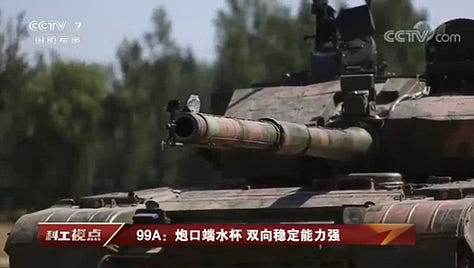




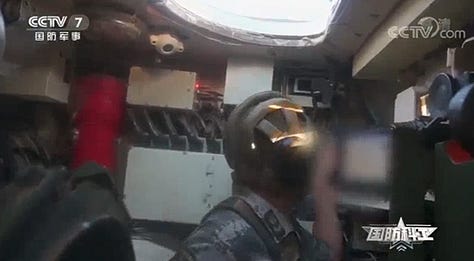


*Tank in this context means Main Battle Tanks (MBTs) such as the ZTZ-96/96A/96B, ZTZ-99/99A, TZQ-15 tanks.
Tank Company Composition
Tank companies in the People’s Liberation Army Army (PLAA) consists of 33 officers and soldiers divided into three platoons with each platoon containing three tanks with each tank representing a squad. The tanks are numbered 01 to 10, with the company Commander (CO) located in the Number 10 tank, the platoon’s instructor trainer located in the Number 01 vehicle, and the platoon leader will be in the Number 02 tank. The tank company’s headquarters radio operators and administrative personnel will ride in the company CO’s and instructor trainer’s tanks will serve as gunners and drivers. The company’s deputy commander/Executive Officer (XO) is responsible for the company’s technical and logistical operations and assisted with a logistical technician to manage equipment and maintenance. The XO and technician are not assigned and ride in tanks and will travel with the brigade headquarters or repair station during operations. However, some of the XO’s will ride and operate tanks since the PLA has no official rules prohibiting XOs from doing so. While the company’s CO, XO, instructor trainer, deputy instructor trainer, the platoon leaders, and division chief will be Chinese Communist Party members, the XO would be the company’s commissar.
Tank Training
Historical Training Methods
PLAA tank training evolved throughout the years, incorporating various advances gained from technological advancements or learned from interactions with foreign militaries. Furthermore, crew training was also historically influenced by the PLA’s lack of funding and cost saving measures. The cost savings meant that the lack of live fire training was wider through the PLA’s service branches and not limited to the PLAA. For example, tank crews would mainly rely on a Chinese clone of the Russian 14.5mm 2H35 or QJC-88 12.7mm heavy machine guns (HMGs) to simulate tank rounds during training. The tanks crews also used white sheets to simulate enemy armor during training events either using HMGs or tank rounds when provided. The PLAA did not place outdated armor on tank ranges for use as targets during live-fire exercises during this time. However, the PLAA moved away from using the HMGs over the years due to the development of better training aids and methods.
Current Training Methods/Gunner Course
From 2018, new PLAA conscripts will receive six months of training regardless of billet or position they receive during the recruitment process. Recruits selected to serve as tank crew members would be sent to the company after undergoing and passing a three-month boot camp. Male students will then receive another three months of training while female students will receive six months of training to become initially qualified as tank crew members. The crew training and assessment is divided into two categories: tactical operations and basic skills related to operating and working with the tank. The tactical operations are based on the crew’s individual jobs and tasks related to them. For example, commanders will be trained in how to operate the communication and navigation equipment; the drivers to become proficient at driving the tank; and the gunner using the fire control system to hit targets. The second part of the cover basic skills such as simple maintenance and rescue, damage control, physical training, and tactical employment of tanks that all crews must know.
As the PLAA incorporated more modern and western-influenced tanks – such as the ZTZ-96 and ZTZ-99 series of tanks – they found a requirement for more complex training to reflect the new equipment. These methods range from using metal rods connected to the cannon muzzle to using simulators for both daily training and various unit exercises. The gunner course is divided into three phases over the training course: learning basic controls, learning how to quick aim (described as quick and accurate aiming and firing)/learning how to operate the fire control system, and live-fire training/assessment. The focus for the gunner is to learn and master how to control the cannon/fire control system since all modern Chinese tanks in service use an autoloader.
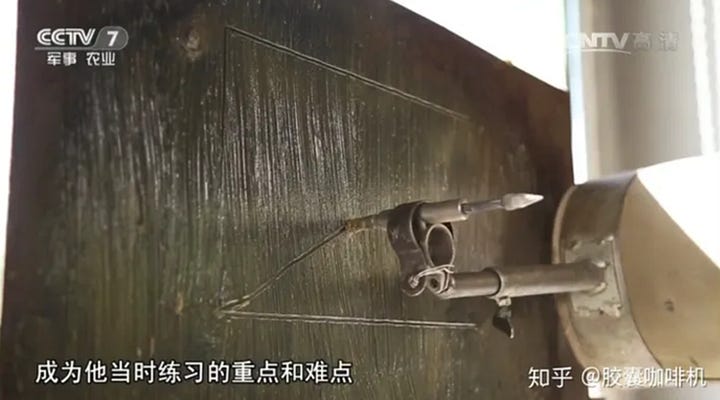
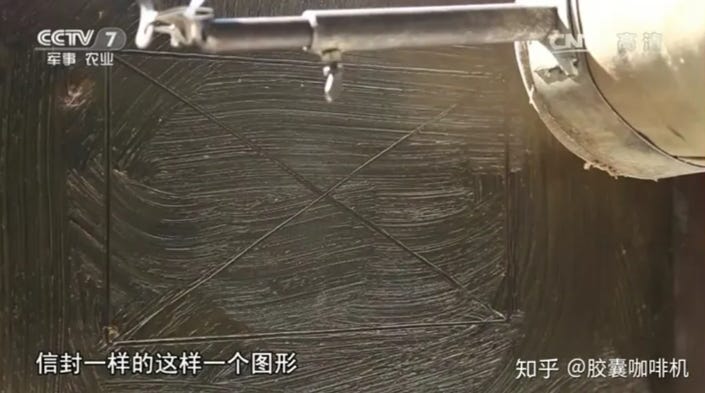
Learning Basic Controls
PLA tank gunners initially undergo an exercise called ‘depicting the target envelope’ 描绘信封靶 to develop and master the cannon’s basic controls. The exercise involves the students drawing an ‘envelope’ using a metal rod connected next to the cannon’s muzzle on a metal plate covered in butter. The rod will draw lines on the butter covered plate as the student moves the muzzle while he attempts to draw the envelope. Reports indicate that students have difficulty drawing slashes when using the controls to control the cannon. The student passes the exercise and is considered to have mastered the basic control of the muzzle when the envelope is drawn completely.

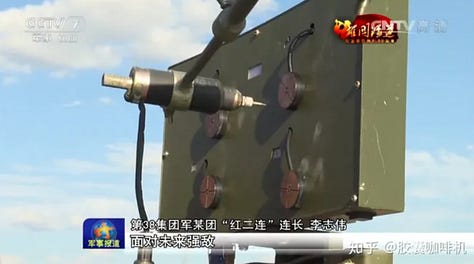




Learning How to Quick Aim
The second phase of gunner training involves the students learning and becoming proficient at ‘quick aiming’ 快瞄. The various sources define ‘quick aiming’ as being the most basic subject of the gunner’s profession and is used to familiarize and master use the use of the fire control system. Students will also be trained in how to operate the tank’s fire control system and use it in conjunction with manual controls. During the phase, the students will use a retractable rod attached with a panel containing multiple miniature targets and metal contacts opposite of the rod/muzzle. Instructors will then install a special lens on the outside of the gunner’s sight that allows for the students to aim at the targets on the panel using the gunner’s sight. Students will use the sight to aim at the various miniature targets – these targets will have visual effects similar to real targets – while controlling the cannon.
A successful ‘hit’ or ‘shot’ would consist of two contacts, the one when the probe connects with the first contact after the gunner moves it to the position. The second contact occurs when the probe connects with the second point after a meter is installed on the fire control then aimed and fired. The shot is considered ‘a hit’ or valid when the loop is formed twice between the probe and electrode. Instructors increase the difficulty by taping the contact point’s edges, leaving only a small area exposed as students become more proficient. The panel’s lower part is also capable of moving laterally via guide rails to simulate tracking moving targets such as enemy tanks, Infantry Fighting Vehicles (IFVs), or other armored vehicles. The probe is detected every second when tracking targets and tracking is considered normal if the loop is formed every sequence.
Instructors will also begin teaching students the various aspects of the tank’s fire control system throughout the phase. Students will be taught how to operate the fire control system as they become proficient at ‘quick aiming,’ with the later half of the phase increasing in complexity. The instruction will include students learning how to fire the tank’s cannon while on the move. The same method is also used to train gunners on IFVs such as the ZBD-04 during their training as well. Students will also be introduced to and use tank simulators – such as the Synthetic battalion tactical confrontation-training system合成营战术对抗训练系统 – during this phase.


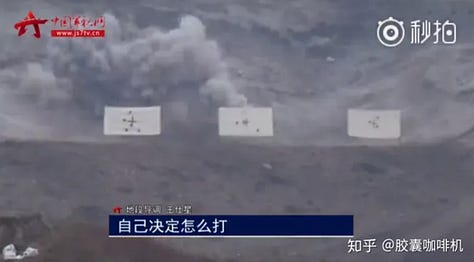
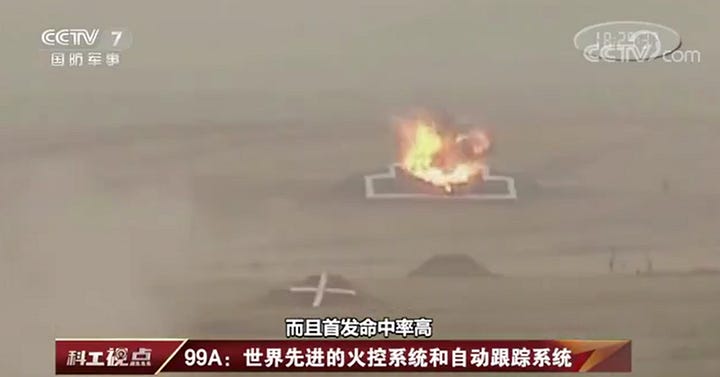

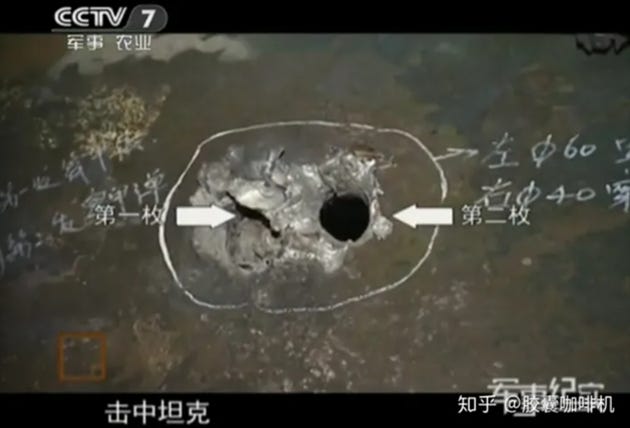

Live-Fire Training/Assessment
The final phase of the course consists of the students conducting various live-fire training and assessment. The live-fire training is divided into two separate training segments, the first is the live-fire range with the second segment used to explain the exercise/assessment. The training consists of the tanks firing from various statics positions and while on the move with the turret turned to various directions or towards the tank’s front. The targets located on the ranges would consist of obsolete tanks such as the Type 59 or Type 79, table clothes, or outlined targets on the ground. However, the PLAA increased the use of obsolete tanks for targets because of the People’s Liberation Army’s (PLA) emphasis on incorporating practical training. The tanks on the range will occasionally have reactive armor blocks installed on them to simulate firing at tanks equipped with reactive armor.
During the live fire training and assessments, tanks will line up at a starting line and then head into the range once they are ready. The tank can start firing its cannon once they pass the shooting line and enter the range’s firing area. The second training segment is used by instructors to explain the to the students the shooting process and give feedback on how they could improve. This segment will also be used to explain to and train the crew on PLAA tank doctrine and tactics. The tank crews will be considered basically trained once they pass the assessment and will then be sent to a tank company to finish their conscription. However, there is no publicly available information regarding the criteria the PLAA will use to determine if the tank crews passed or failed. The tank crews will receive follow-on training and would likely be considered fully qualified after they experience a major summer exercise.






Follow-on Training
The crews will continue follow-on training using various methods such as live fire training/exercises and simulators to become more proficient and maintain the skills they learned. These live fire exercises would be initially used to continue training the new tank crews in more advanced tank tactics to increase their proficiency at employing the tanks. These exercises would also include the tank crews facing sister companies acting as opposing forces (OPFOR) units or dedicated OPFOR units located at regional training bases. The dedicated OPFOR units include the 195th Heavy Combined Arms Brigade – also known as the Wolves of Zhurihe – located at the Zhurihe Training Base in Inner Mongolia. These exercises would include the use of laser simulation devices attached to the tank’s cannon muzzle and smoke grenades installed on the tank’s turret. The scoring system will adjust the tank if a ‘hit’ is registered depending on where the tank was damaged and what kind of ammunition caused the damage. The system will then fire a specific grenade to indicate the type of battle damage the tank received and if it is still operational or is destroyed.
However, the PLAA increased the use of simulators not only for tank crew training but also for unit exercises. Specifically, the PLAA uses various simulators to train tank crews, ranging from physical analogs to train crew members on various functions to computer simulators. The synthetic battalion tactical confrontation-training system to train tank crews and for use in company and battalion level exercises due to its benefits. One benefit is that it allows crews to train on tank gunnery and tactics without increasing the wear and tear on the tank and increasing the maintenance for the tanks. Another benefit is that allows for the tank crews to train in a laboratory setting and for instructors to evaluate crews in real time since it is connected to a computer or screen. The instructors could also immediately give feedback to the tank crews as they are in the simulator. The system’s ability to connect multiple simulators together for use in unit exercises to the battalion level allows the tank crews to train together without needing to prepare for a physical exercise.

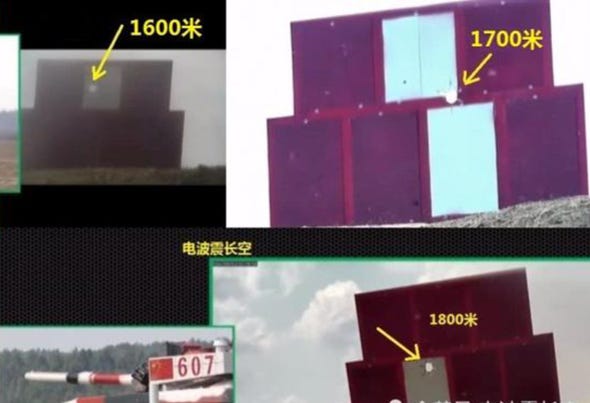
Current and Future Doctrine
Since at least 2014, PLAA tank doctrine is focused on incorporating realistic training scenarios into its training from lessons learned from its interactions with foreign militaries and analyzing military conflicts. The doctrine also places more emphasis on the speed the tanks can acquire and engage realistic targets – the targets would be hidden, camouflaged, or concealed behind terrain – during training ranges. While tank crews usually engage targets between approximately one to 1.24 miles (1600 to 2000 m), the targets were fully exposed on the ranges, enabling them to easily locate them. Another point that the doctrine places a significant emphasis on is the speed the gunners need to acquire and engage enemy armor during engagements. The reason why the PLAA increased focus on increasing the speed gunners acquire targets under realistic scenarios is due to tank crews’ performance during the annual tank biathlons held in Russia.
The emphasis on speed resulted in new training requirements for not only gunners but also instructors. For example, instructors now must meet the time requirement of accurately locating and engaging three targets in approximately 30 to 36 seconds. The instructors pass if they successfully locate and engage all three targets during the assessment. However, the new requirement resulted in instructors in several PLAA brigades losing their certifications when they could not pass the assessment when first implemented in 2021. For example, several instructors could not locate the targets due to the targets partially camouflaged or hidden. Some instructors also had difficulty in meeting the time of 12 seconds to engage the targets.
Another concept the PLAA incorporated into tank doctrine is that tank gunners must follow through with their first shots since it does not always mean the enemy tank is destroyed. Until 2014-2015, PLAA tank crews were trained under the concept of ‘discovery means hitting, hitting means destroying’ 发现即命中,命中即摧毁 and ‘hit equals excellence’ 命中即优秀. However, after incorporating moving tanks as targets, the PLAA realized that the then current training methods – only shooting white sheets, false targets, and obsolete tanks – did not meet the new emphasis on realistic training. The training doctrine was then revised to emphasize following through after the gunners first their initial round.
While current PLAA tank doctrine incorporated lessons tank crews learned from participating in Russia’s tank biathlons, they will also do the same from analyzing the Ukrainian conflict. For example, the PLAA will likely continue to emphasize on the rapid acquisition and engagement of enemy armor since almost all tank-on-tank engagements in Ukraine occur at around 0.62 miles (1000 m). Another lesson the PLAA would likely incorporate into their doctrine would be using tanks as fire or indirect support assets to supplement IFVs and artillery.
Analysis: While PLAA tank doctrine evolved to both reflect the modern tanks it now uses and the lessons it learned from analyzing past conflicts, it still faces several obstacles. The most significant obstacle the PLAA must overcome is it is still in the process of incorporating new concepts – such as increased emphasis on rapid engagement – into its training curriculum since its start in the mid-2010s. While some concepts caused little issues for tank gunners to overcome, other concepts such as the ability to rapidly locate and engage targets, will likely continue to cause significant issues. These issues range from instructors requiring remedial training under the new concepts to difficulties surrounding trying to incorporate realistic scenarios into training such as moving targets. Furthermore, the PLAA also began to incorporate the emphasis to rapidly locate and engage targets in realistic scenarios during the height of COVID-19, likely slowing the incorporation. Another obstacle that the PLAA faces is the potential for them to run out of tanks to use for moving targets. While the repair sections can repair tanks used during training, the tanks will quickly reach the end of their operational life due to repeated use as live-fire targets. The PLAA could potentially use other armored vehicles such as IFVs, they would not be a good analog for tanks due to their different size and profile Furthermore, the armored vehicles would be a poor alternative due to their thin armor not providing the same resistance as tank armor.
There are several differences between PLAA tank training/doctrine and the tank training/doctrine of western countries such as the U.S. Army. These differences mean the PLAA is less proficient than their western counterparts regarding how they would employ their tanks in tactical environments. The most notable difference is the PLAA’s recent incorporation of realistic training scenarios and emphasis on speed to allow for more practical training. The U.S. Army and other western militaries will use realistic scenarios to increase their tank crews’ proficiency and ability to operate their tanks in tactical environments. Another difference is the shorter length of training PLAA gunners will undergo compared to western militaries. For example, the U.S. and British Armies’ tank crewmen courses are 5 and 4.6 months long respectively, which is twice as long as the PLAA’s course. However, the Australian Defense Force’s tank crewmen course is approximately the same length as the PLAA’s course at three months each. Another difference is the relatively low number of shells the PLAA tank crews will fire during their assessments compared to their western counterparts. However, the PLAA do have some similarities in their tank training/doctrine with their western counterparts. One similarity is the PLAA’s use of gunnery tables and how the PLAA assesses the tank crew’s proficiency in employing the tank and weaponry in tactical environments. However, the PLAA gunnery tables likely do not go deep into assessing crew’s proficiency as the western equivalent.



